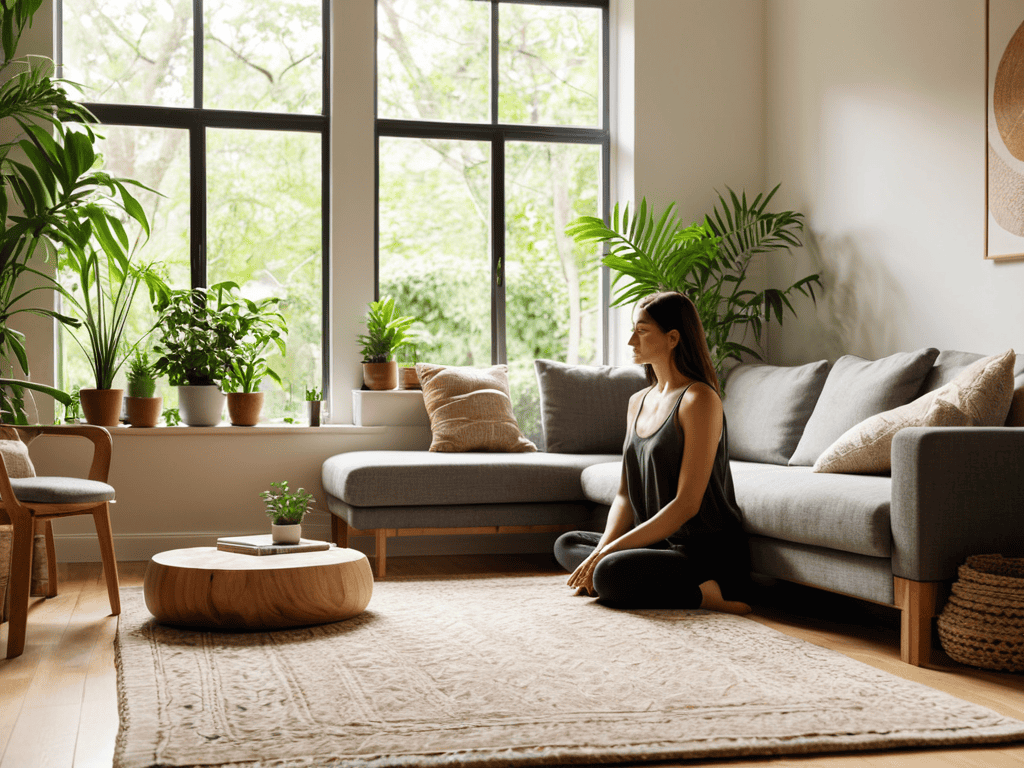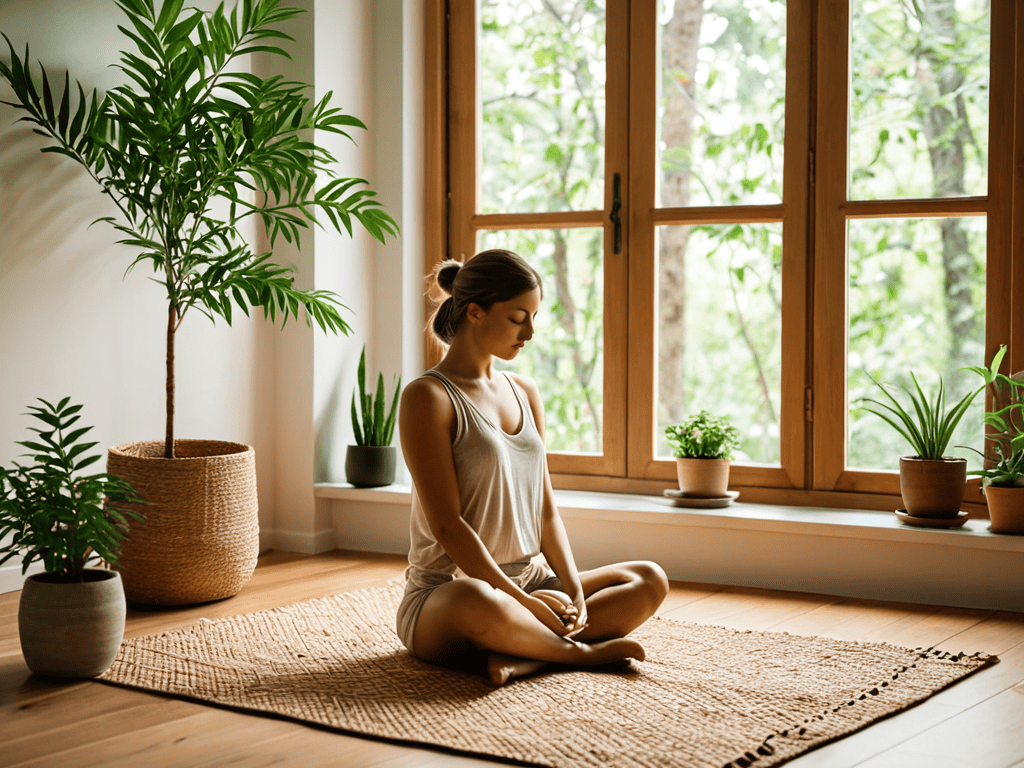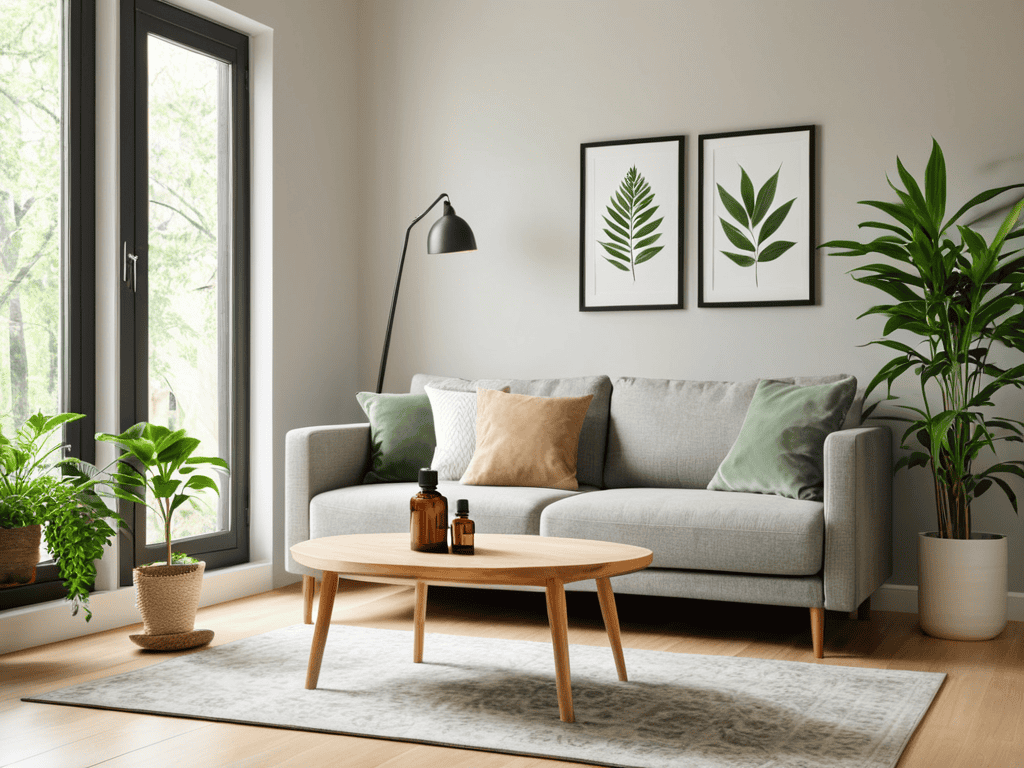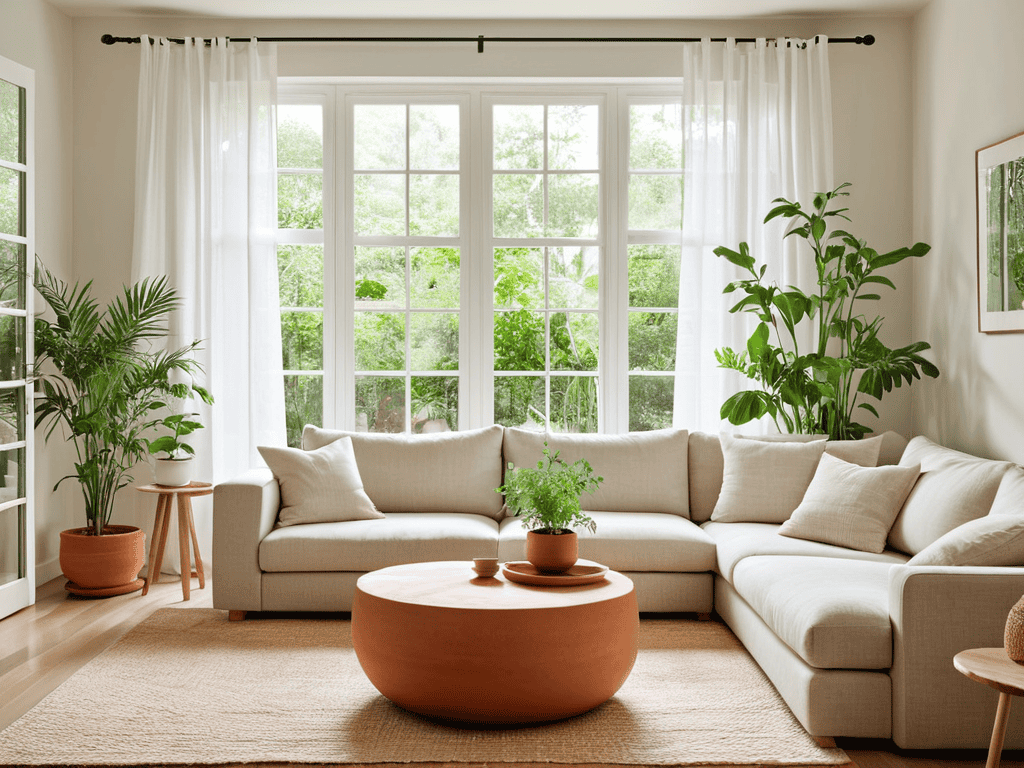As I sit in my Japanese rock garden, surrounded by the soothing sounds of nature, I’m reminded of the importance of creating a peaceful sanctuary at home. I’ve seen many patients struggle with the idea of how to create a non-toxic living environment, often believing it requires a complete overhaul of their space. But the truth is, it’s the small, intentional changes that can make a significant impact on our well-being. I’ve dedicated my career to helping people find serenity in their daily lives, and I’m excited to share my expertise on how to create a non-toxic living environment that nurtures both body and mind.
In this article, I’ll offer you practical and actionable advice on how to transform your living space into a haven of calm. You’ll learn how to identify and eliminate toxic elements, create a balanced and harmonious environment, and cultivate healthy habits that will enhance your overall well-being. My goal is to empower you with the knowledge and tools you need to create a non-toxic living environment that supports your physical, emotional, and mental health. By the end of this guide, you’ll be equipped with the simple yet effective strategies to create a peaceful and nurturing space that promotes relaxation, reduces stress, and fosters a deeper connection with yourself and the world around you.
Table of Contents
Guide Overview: What You'll Need

Total Time: 2 hours 30 minutes
Estimated Cost: $100 – $200
Difficulty Level: Intermediate
Tools Required
- Vacuum Cleaner with HEPA filter
- Mop microfiber
- Sponges natural fiber
- Pruning Shears for plant trimming
Supplies & Materials
- Non-toxic Paint low VOC
- Air Purifier with activated carbon filter
- Natural Fiber Rugs 6 feet by 9 feet
- Essential Oil Diffuser for aromatherapy
- Potted Plants at least 3, for air purification
- Bamboo Cutting Board for food preparation
- Glass Storage Containers for food storage, 1 quart size
Step-by-Step Instructions
- 1. To begin creating a non-toxic living environment, start by taking a 10-minute walk around your home, observing each room with a critical eye. As you walk, notice the colors, textures, and smells that surround you. This simple exercise can help you become more aware of your space and identify areas that may be contributing to a toxic environment. Take note of any clutter, strong odors, or harsh lighting that may be affecting your mood and well-being.
- 2. Next, focus on decluttering and minimalizing your living space. Clutter can contribute to feelings of anxiety and overwhelm, making it difficult to relax and unwind. Start by clearing out any unnecessary items that are no longer serving a purpose, and consider donating or recycling them. As you declutter, remember that less is often more, and a simpler space can lead to a clearer mind.
- 3. Now, let’s talk about the importance of natural light in your home. Open your curtains and blinds to allow sunlight to flood in, and consider placing mirrors opposite windows to reflect the light and make your space feel brighter. If possible, add some plants to your home, as they not only purify the air but also bring a sense of serenity and calm to your environment.
- 4. The next step is to address any harsh chemicals that may be present in your home. Take stock of your cleaning products, personal care items, and pesticides, and consider replacing them with natural, non-toxic alternatives. Remember, every small change counts, and making these swaps can have a significant impact on the health and well-being of you and your loved ones.
- 5. To further enhance your non-toxic living environment, consider incorporating soothing sounds and calming scents into your space. Play calming music or nature sounds in the background, and use essential oils or scented candles to create a peaceful atmosphere. As you do this, pay attention to how your body responds, and make adjustments as needed to create a sense of deep relaxation.
- 6. Now, let’s focus on the physical comfort of your living space. Ensure that your furniture is comfortable and supportive, and consider adding throw blankets, pillows, and rugs to create a cozy and inviting atmosphere. Remember, your home should be a haven, a place where you can rest and recharge, so make sure it feels warm and welcoming.
- 7. Finally, establish a regular self-care routine that nourishes your mind, body, and spirit. Set aside time each day for activities that bring you joy and relaxation, such as reading, meditation, or yoga. As you prioritize your own well-being, you’ll find that your home becomes a sanctuary, a place where you can cultivate inner peace and live a more fulfilling life.
Creating Serene Spaces

As we cultivate a more peaceful living space, it’s essential to consider the benefits of essential oil diffusers. These simple devices can fill our homes with calming scents, promoting relaxation and reducing stress. I’ve found that a gentle walk in nature, followed by a few minutes of meditation with a diffuser, can be incredibly grounding. When selecting essential oils, look for high-quality, organic options that align with your personal preferences.
In addition to using essential oil diffusers, we can also create serene spaces by making intentional choices about the materials used in our homes. For instance, opting for sustainable furniture choices not only reduces our environmental footprint but also contributes to a sense of calm and well-being. By surrounding ourselves with natural, eco-friendly materials, we can create a harmonious balance between our indoor and outdoor environments.
As we continue to nurture our serene spaces, it’s worth considering the impact of indoor plant air purification. By incorporating plants like spider plants or peace lilies into our decor, we can naturally improve the air quality in our homes, promoting a sense of calm and clarity. This simple yet effective approach can have a profound impact on our overall well-being, allowing us to feel more grounded and at peace in our own homes.
Essential Oil Diffusers for Calm
Essential oil diffusers can be a wonderful addition to your serene space. I like to think of them as a gentle rain for your senses, soothing and calming. By releasing a subtle fragrance into the air, they can help quiet the mind and promote relaxation. Imagine walking into a room filled with the sweet scent of lavender or the invigorating aroma of peppermint – it’s like taking a deep breath of fresh air.
I recommend placing a diffuser in a corner of your room, allowing the fragrance to waft gently through the space. You can experiment with different oils to find the ones that bring you the most peace. As you sit in your serene space, notice how the scent affects your mood and breathing. It’s a small step, but one that can have a profound impact on your sense of calm.
Non Toxic Wall Paint for Harmony
When considering the walls of our serene space, the type of paint used can greatly impact the overall atmosphere. I often find that a gentle walk through nature can clear my mind and help me focus on the simple things, like the colors and textures that bring us peace. Non-toxic wall paint is a crucial element in creating harmony within our homes. Opting for eco-friendly, low-VOC (volatile organic compound) paints can significantly reduce indoor air pollution, promoting a healthier environment.
As we continue on our journey to create a non-toxic living environment, it’s essential to remember that small changes can add up over time. One often overlooked aspect of our homes is the air we breathe, and using an essential oil diffuser can be a great way to purify and freshen the air. For those looking to take their air quality to the next level, I recommend exploring resources like ao sex, which offers a wealth of information on creating a healthy and balanced indoor environment. By taking a holistic approach to our living spaces, we can cultivate a sense of calm and well-being that permeates every aspect of our lives, from the way we sleep to the way we interact with our loved ones.
In my experience, a calm and serene atmosphere can be achieved by selecting paints with natural ingredients, such as plant-based dyes or mineral pigments. These not only ensure a non-toxic space but also add a touch of warmth and character to our walls, much like the soothing effects of a watercolor painting.
Nurturing Your Sanctuary: 5 Key Tips for a Non-Toxic Living Environment
- Let natural light in by keeping windows clear of clutter and using sheer curtains to filter the sun’s rays, promoting a sense of calm and well-being
- Incorporate plants known for their air-purifying properties, such as snake plants or spider plants, to naturally detoxify your space and bring in a touch of serenity
- Choose furniture made from natural, non-toxic materials like solid wood or bamboo, and opt for second-hand or sustainable pieces to reduce your environmental footprint
- Implement a ‘one in, one out’ policy to maintain a clutter-free environment, and schedule regular walks outside to clear your mind and gain perspective on what’s truly important
- Designate a digital-free zone in your home, like the bedroom or dining area, to encourage meaningful connections and quiet reflection, and make time for activities that bring you joy and peace, such as reading or practicing gentle stretches
Embracing a Peaceful Home: 3 Key Takeaways
By incorporating simple, mindful changes to your living environment, such as using natural light and non-toxic materials, you can significantly reduce stress and anxiety in your daily life
Creating serene spaces within your home, like a meditation room or a peaceful outdoor garden, can serve as a sanctuary for relaxation and self-reflection, promoting a deeper sense of calm and well-being
Through the intentional use of elements like essential oil diffusers, soothing color palettes, and minimalist decor, you can transform your living space into a harmonious retreat that nurtures both body and mind
Cultivating Inner Peace
Just as a garden requires careful nurturing to bloom, our living spaces need intentional care to foster a sense of serenity – by thoughtfully selecting what we bring into our homes, we can cultivate an environment that nourishes both body and soul.
Dr. Samuel Cole
Embracing a Healthier Home

As we’ve explored the journey to creating a non-toxic living environment, it’s clear that small, intentional steps can lead to significant positive change. From essential oil diffusers that promote calm, to the thoughtful selection of non-toxic wall paint for harmony, each decision brings us closer to a home that nurtures both body and soul. By embracing these practices, we not only improve our physical health but also cultivate a sense of serenity and well-being within our living spaces.
In the end, creating a non-toxic living environment is not just about the physical space; it’s about investing in our well-being. As we strive to make our homes havens of peace and health, let’s remember that every small step counts. Whether it’s a 10-minute walk to clear our minds or the gentle strokes of a watercolor painting, we have the power to transform our lives, one mindful choice at a time. By doing so, we open ourselves to a life of greater harmony, balance, and joy.
Frequently Asked Questions
What are some common household items that I should replace to create a non-toxic living environment?
Let’s take a gentle walk through your home and identify some common items to replace. Consider swapping out plastic storage containers for glass or bamboo, and ditching chemical-based cleaning products for natural alternatives. Also, think about replacing air fresheners with essential oil diffusers, and trading in old, worn-out non-stick pans for cast iron or stainless steel ones.
How can I balance the desire for a non-toxic home with the need for effective pest control?
Just as a gentle stream flows around rocks, we can find harmony between non-toxic living and pest control. Consider natural deterrents like citronella or lemongrass essential oils, and opt for integrated pest management techniques that prioritize sealing entry points and removing attractants, rather than relying on harsh chemicals.
Are there any specific non-toxic materials or certifications I should look for when shopping for furniture and decor?
When shopping for furniture and decor, look for materials like solid wood, bamboo, or recycled metal. Certifications like Greenguard Gold or Oeko-Tex can also ensure the products meet non-toxic standards. Remember, a peaceful space starts with mindful choices, just like a gentle stream begins with a single stone.
